It popped up on my LinkedIn newsfeed last week, giving me a little jolt. I had to rub my eyes to make sure I was not seeing things. ?
Could it be true? Did Jessica Alba, the mega-pint superstar, want to add little old me to her network?
That was my instant thought as I glanced at my screen.

I was amazed that the Into The Blue movie star had changed careers to cybersecurity. But more so that she was the “Chief CyberSecurity Hype Woman” at a prominent cybersecurity company
Well, there was one minor issue. Jessica Alba wasn’t using her real name. I guess she was using her alias “Alicia Ortega.” Oh, and apparently, she moved from her lavish home in Beverly Hills to Austin, Texas.
Needless to say, while I was tempted to click accept, I decided to hold back.
Not Today Jessica, Sorry
After a little prudent due diligence, it turns out Jessica Alba was just a disguised AI-generated profile. The picture and profile were not her. Jessica Alba didn’t work for the cybersecurity company.
I, and many others in the fraud and cybersecurity field, had been duped. We all faithfully clicked the link to report the account as fraud.
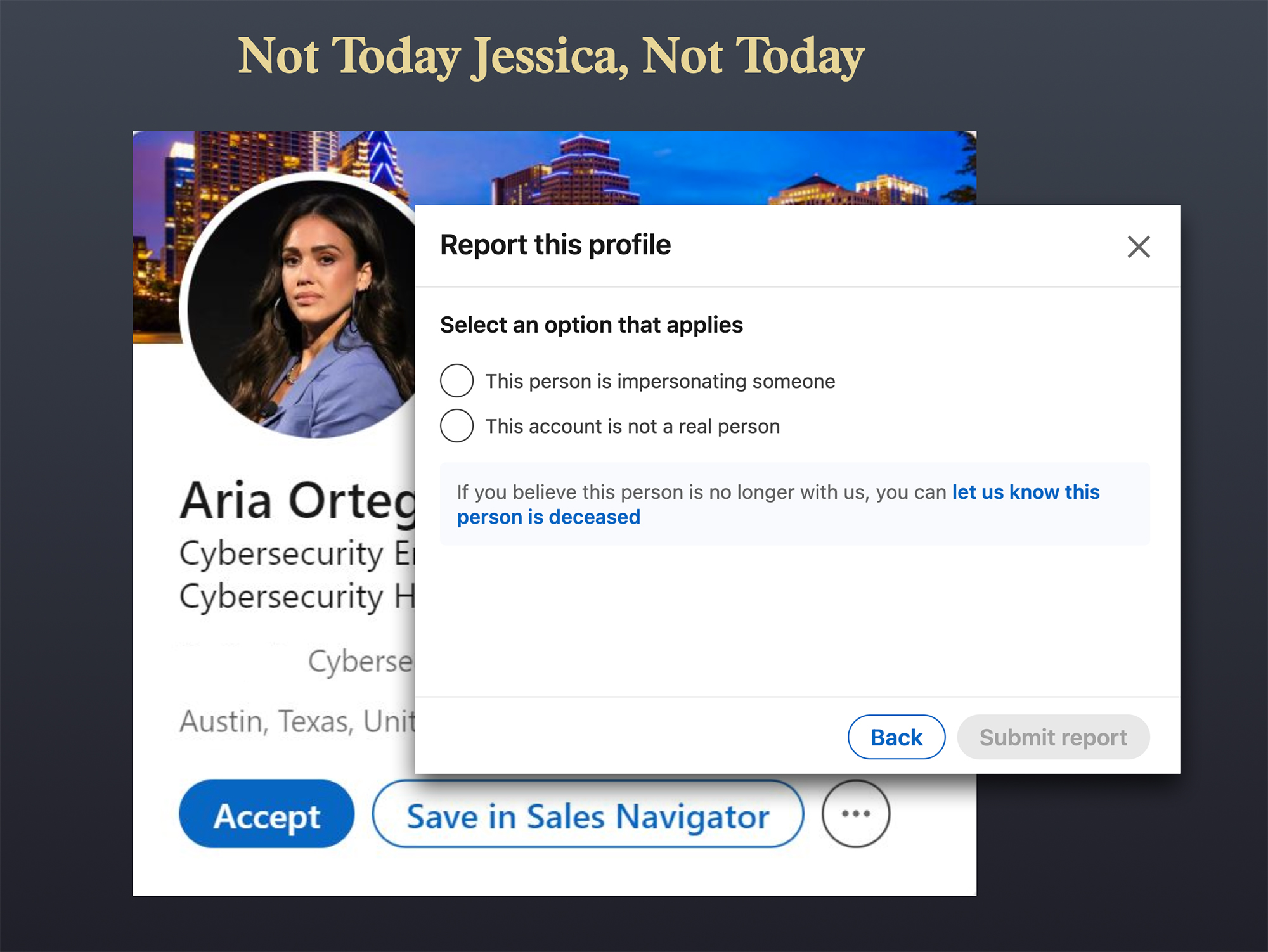
A day later, the profile disappeared. Many of us assumed LinkedIn terminated the profile after they received our reports.
That Might Have Been It, But Then This Happened
That might have been the end of the story. And a short story it would have been.
But then something strange happened. I decided to search a week later to see if there were other fake “CyberSecurity Enthusiast” profiles out there.
And to my surprise. There was! ?. And they worked for the exact same CyberSecurity company.
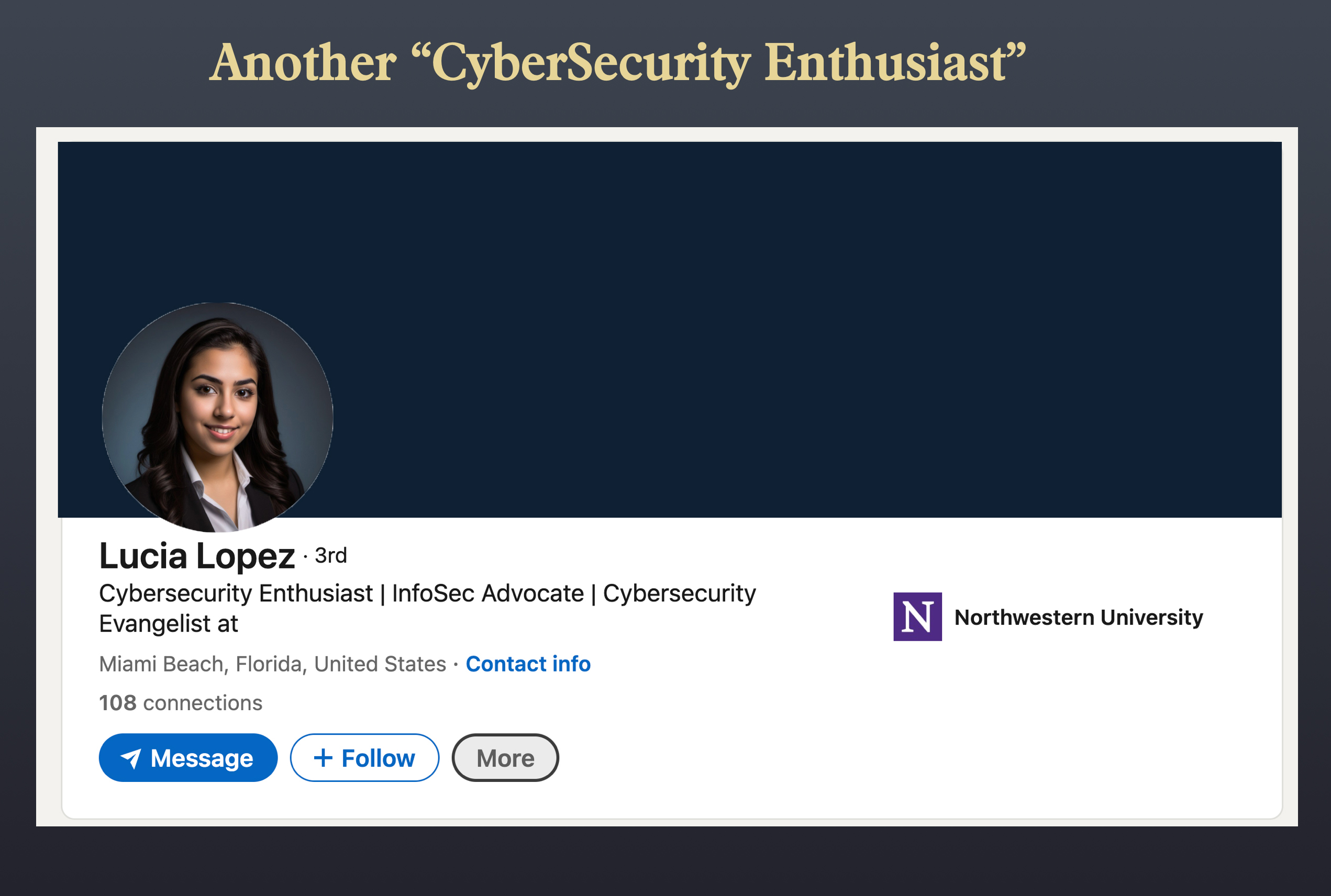
What was going on here? I decided to really dig into this. Did we have an imposter in the cybersecurity and fraud industry?
Why was another questionable profile appearing so shortly after Jessica Alba’s fake profile disappeared?
A Profile That Appears To Be Entirely Created With Generative AI
It didn’t take long for me to spot red flags. What was unusual about this fake profile, however, was that every single aspect of it appeared to be a bot using Generative AI.
#1 Red Flag The Profile Photo Matched To An AI Image
I reverse-image searched the photo on PimEyes. If you don’t have it, I suggest you get it because it searches billions of images using facial recognition.
And Lucia’s image appeared to be AI-generated.
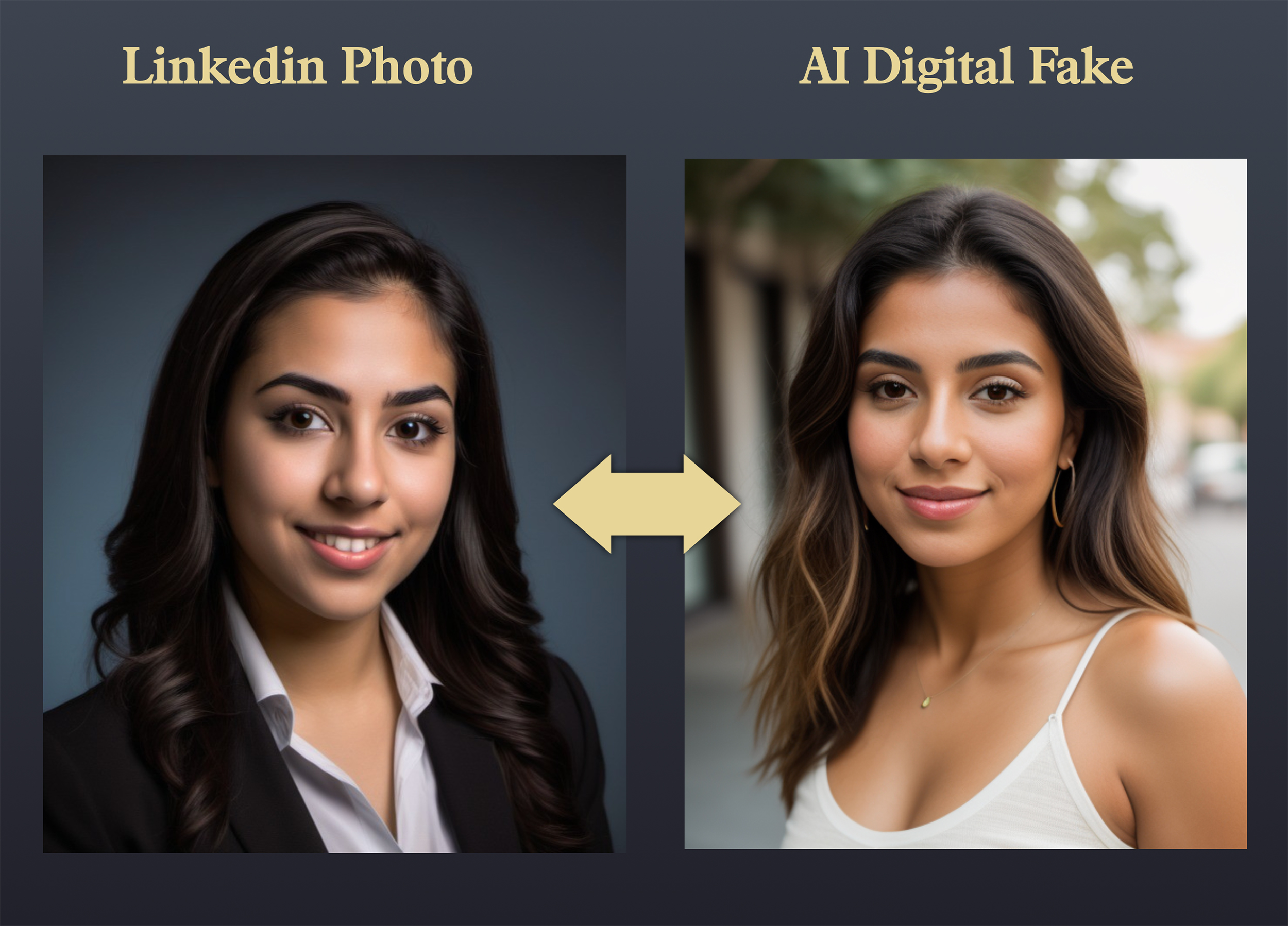
#2 Red Flag – Profile Was Just Created And Ramping Up Quickly
The second dead giveaway was that Lucia’s profile was brand new, and her connection count was ramping up quickly.
She was popular!
#3 Red Flag – The Profile Was Congratulating Everyone. Was this an AI Bot?
Lucia’s profile loved to shower congratulations on just about everyone. In fact, it appeared she was congratulating absolute strangers almost every minute. This was looking like an obvious bot!
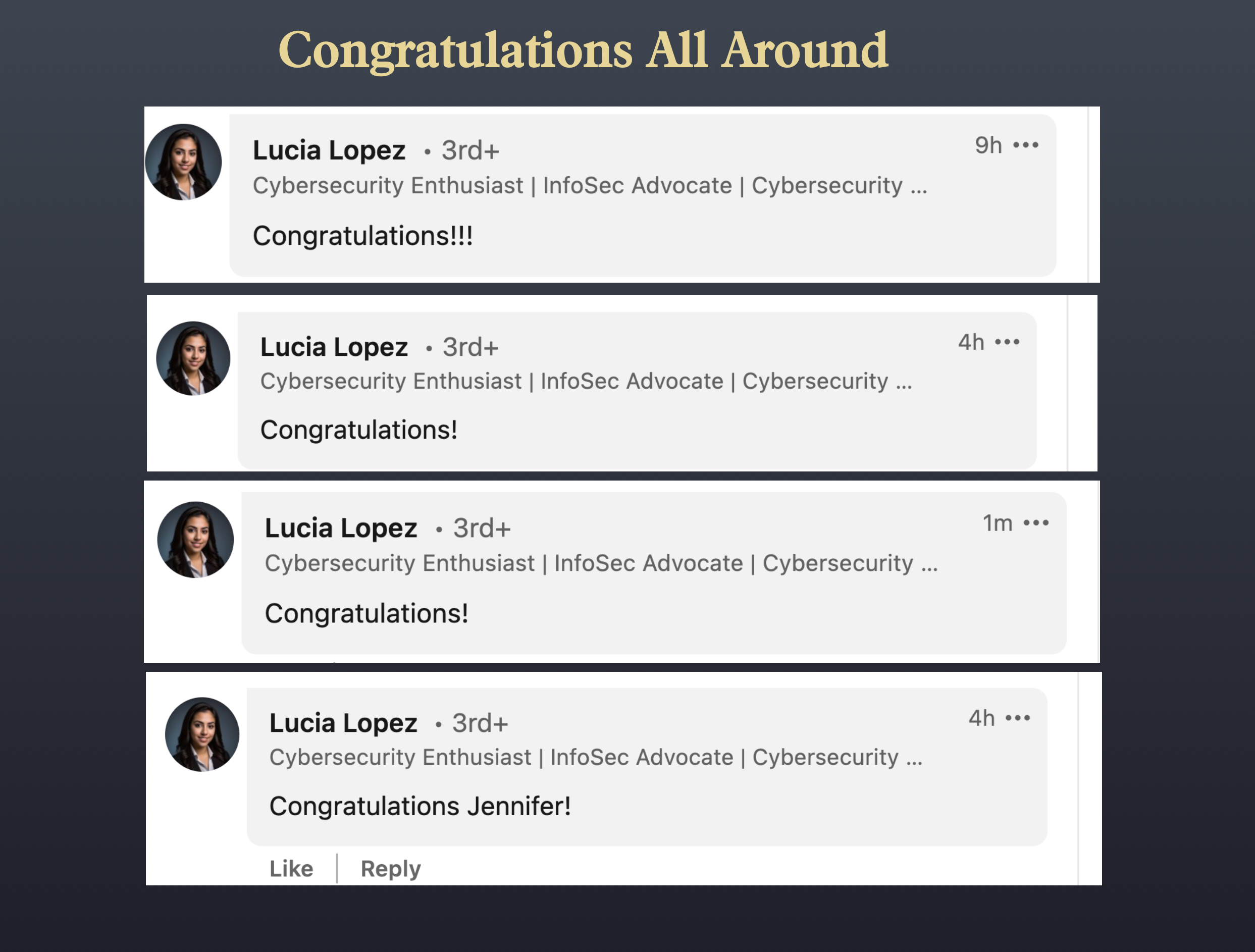
#4 Red Flag – Machine Gunned ChatGPT AI Comments By The Minute
The fourth red flag was really unusual. It appeared that Lucia was posting long and intellectual comments on tons of cybersecurity content. But each comment followed a predictable pattern.
- Repost a cybersecurity article
- Summarize the article
- Ask a poignant question at the end
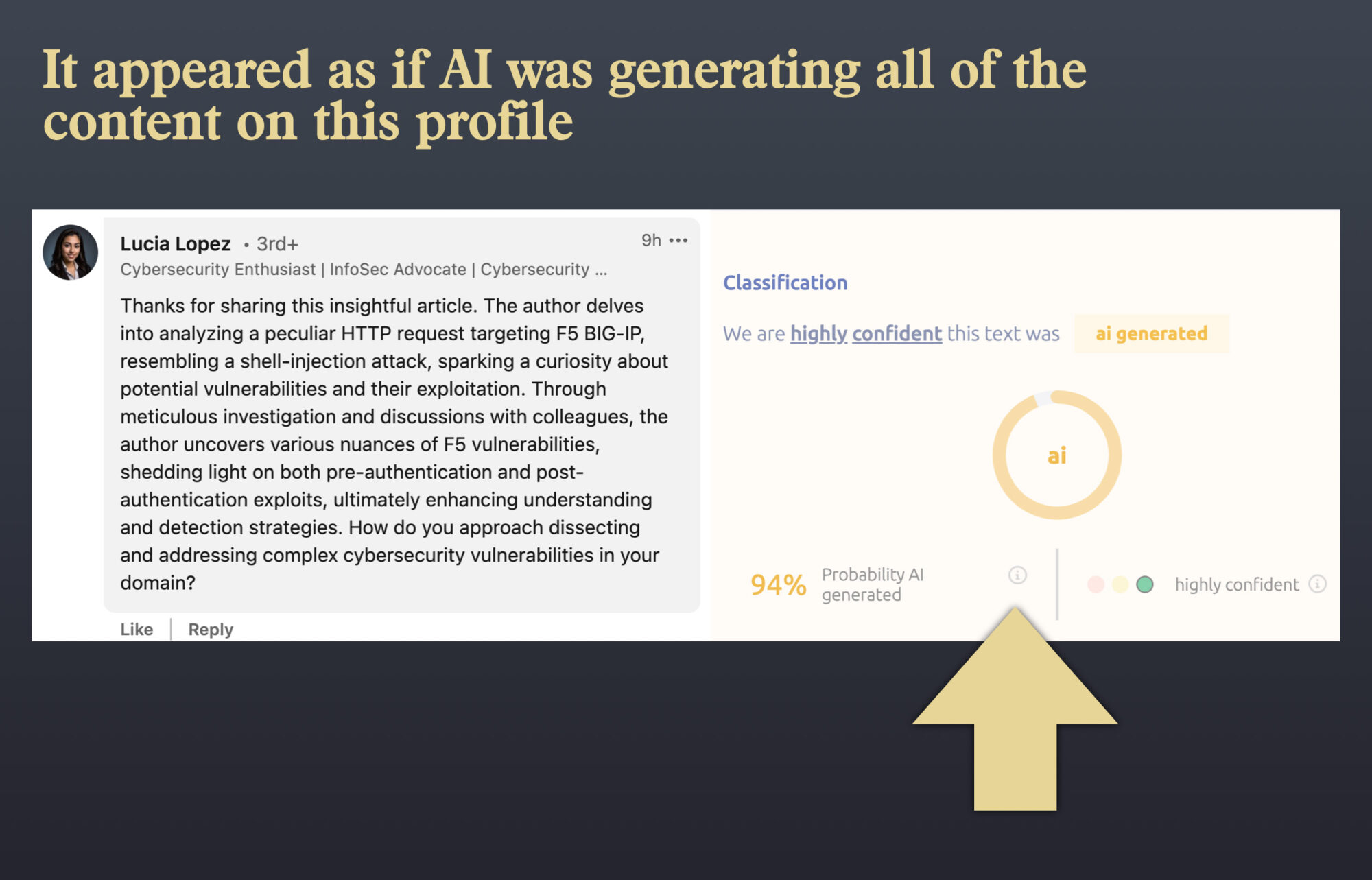
#5 – The Profile Was Not Dynamic And Would Not Reply
The next red flag is that the profile did not appear to respond to anyone, including me. Perhaps this was just a bot after all.
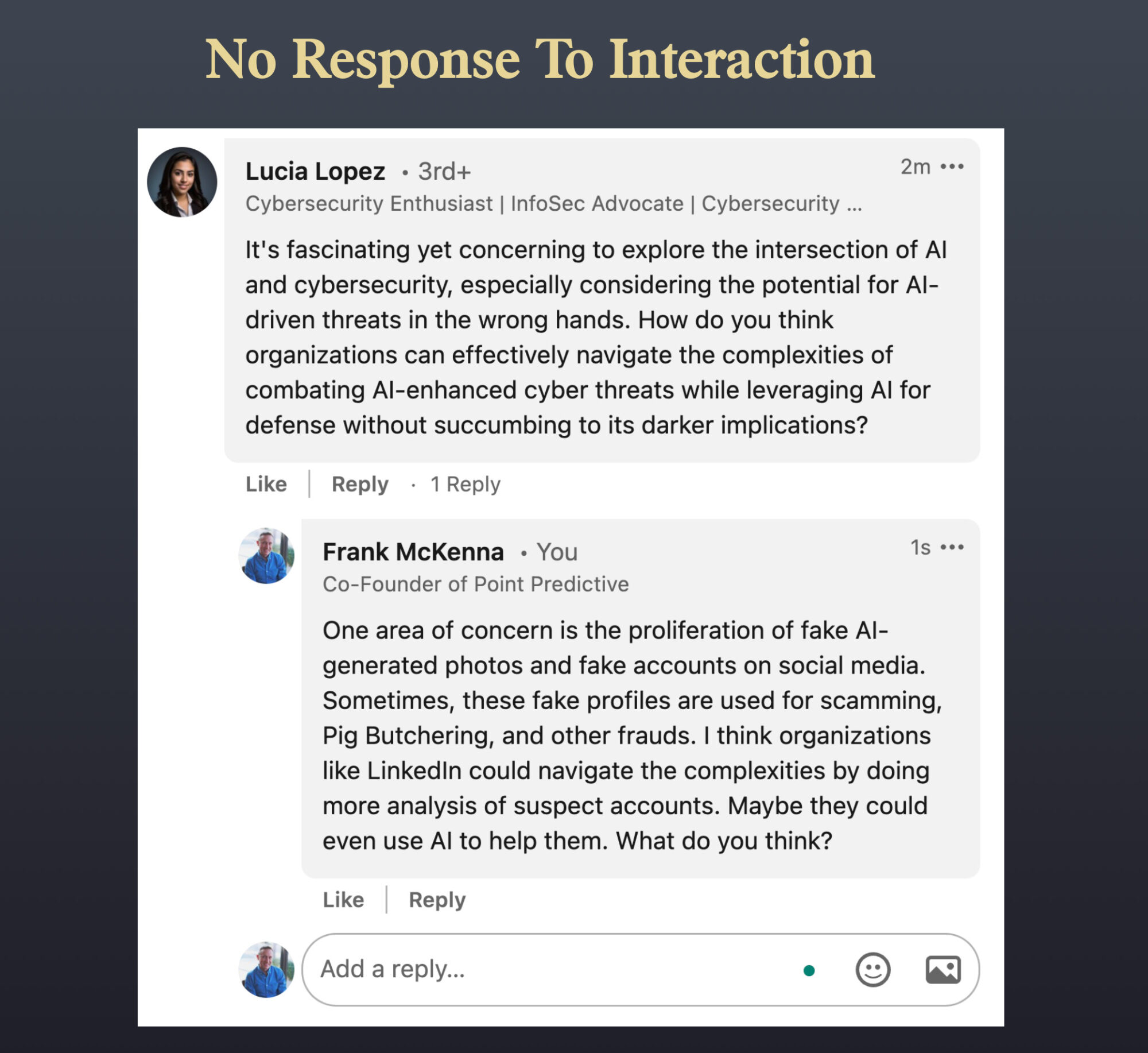
So I Decided To Reach Out To The Company To Alert Them
I was sure this was a fake account, and being that she claimed to work for a Cybersecurity company, they would undoubtedly want to know.
So I reached out with a simple LinkedIn Message.
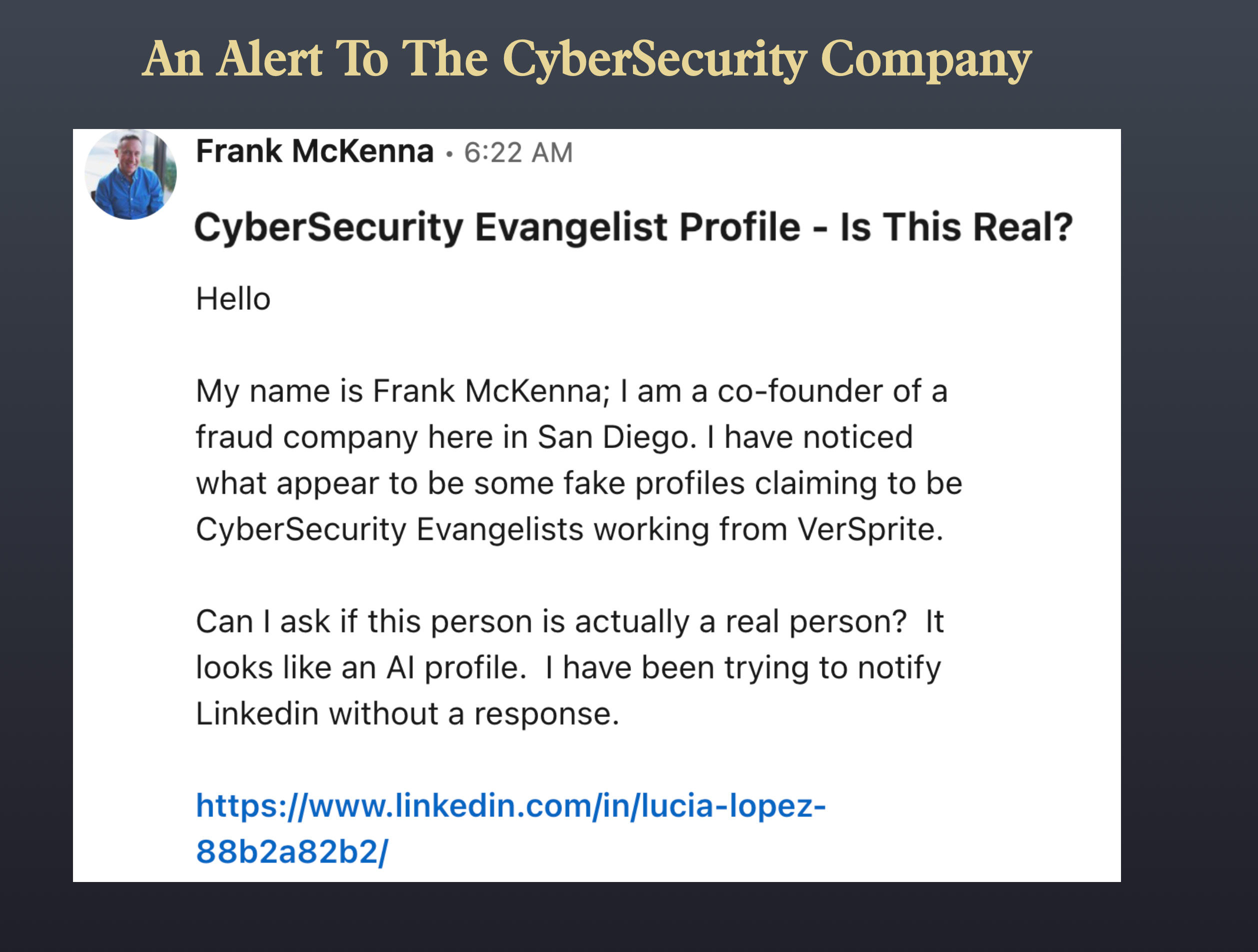
To My Utter Surprise, They Said It Was A Real Person
Within 10 minutes, I received a response from the company, “Your algorithm may be off; she is a real person. Was there anything inappropriate that she said I should be aware of”?
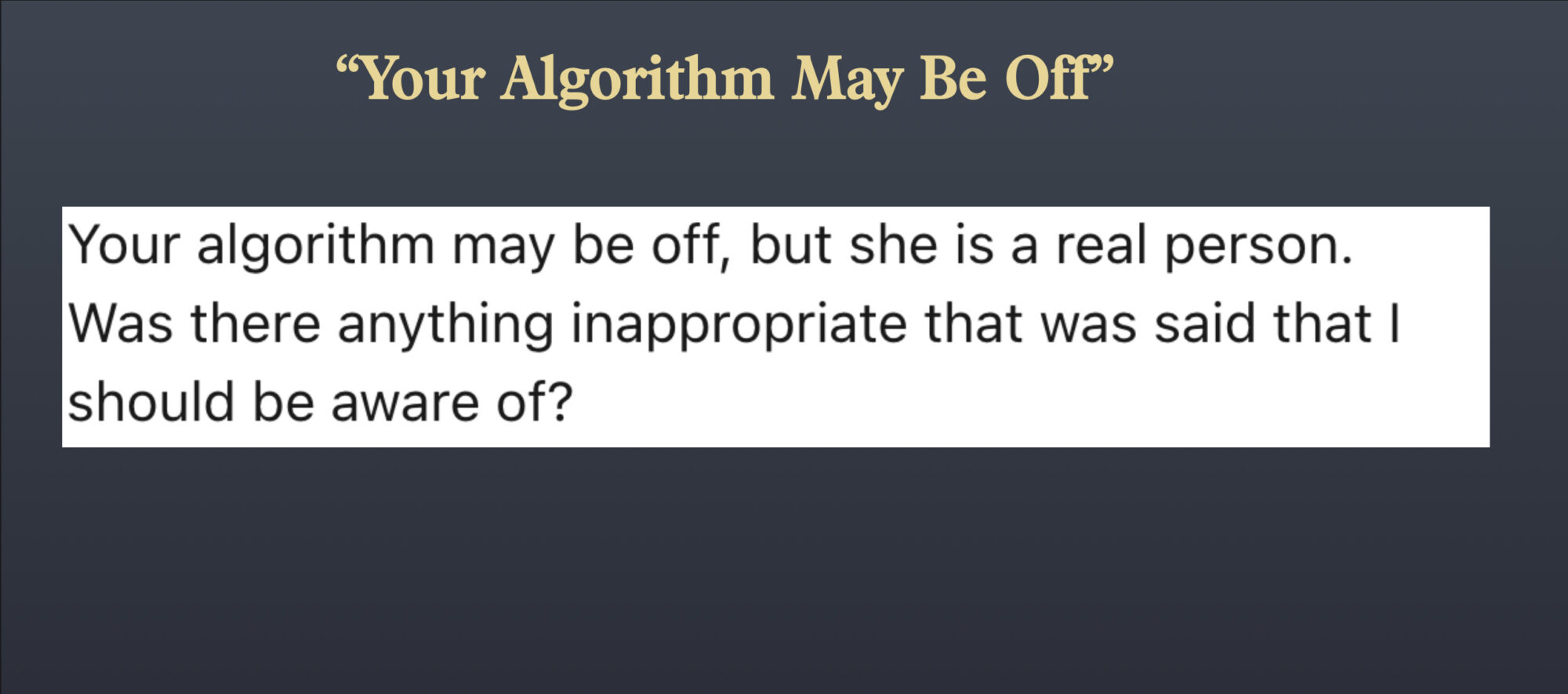
I was stunned. How could everything I think I know about fake profiles and fraud be wrong?
How could this profile that matched an AI image be a natural person?
How could these rapid-fire ChatGPT comments that were posted so fast be generated by a human?
I seriously questioned myself. The lines between reality and my perception seemed blurred entirely now.
It Was AI. And Should A CyberSecurity Company Be Doing This?
I continued my conversation with the Cybersecurity company, and they later admitted that the images were AI generated and that the marketing department employees were being “harassed by men” on Linkedin, so they altered their photos with AI.
They also admitted that the employee that used the Jessica Alba image had recently left the company, but they didn’t remember her “looking quite like that.”
Needless to say, their explanation made no sense. The real issue is, should a cybersecurity company, a company that is built on trust, be using AI-generated profiles to develop its LinkedIn network?
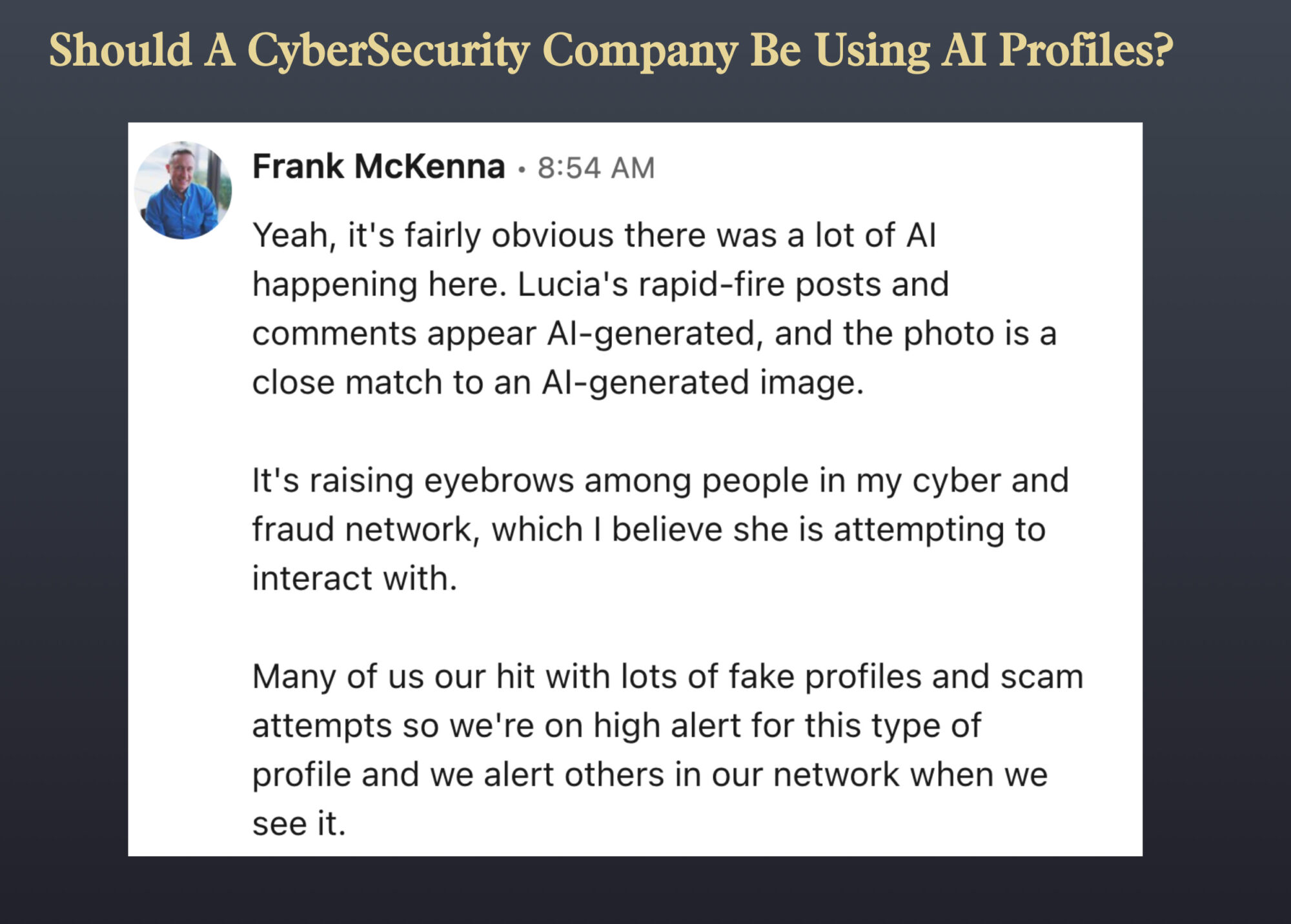
Should Marketers Use The Same Tactics As Pig Butcherers And Romance Scammers?
What struck me most about the profiles is how similar it appeared to Pig Butchering – a young, attractive woman interacting frequently and trying to engage with targets deceptively. This crosses into a grey area that is dangerous.
How can a company use a tactic that is so similar to what scammers do and expect to be respected in the fraud and cybersecurity community?
I don’t know. I think it’s dead wrong and a bad way to market your company in this space.
In the world of AI, lots of companies are going to make bad mistakes with AI and hurt their branding. What do you think?
By the way, that Lucia Lopez profile. That’s gone now too.




